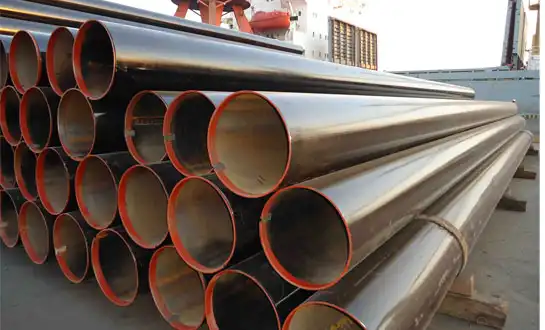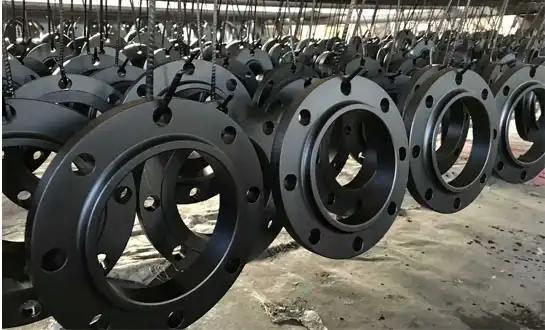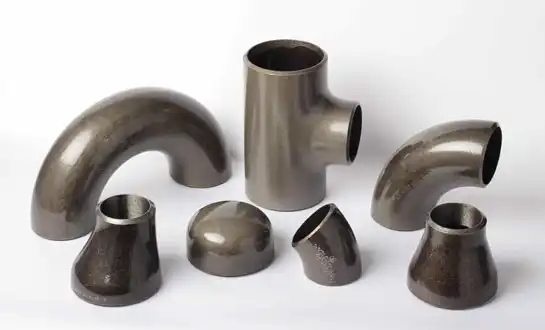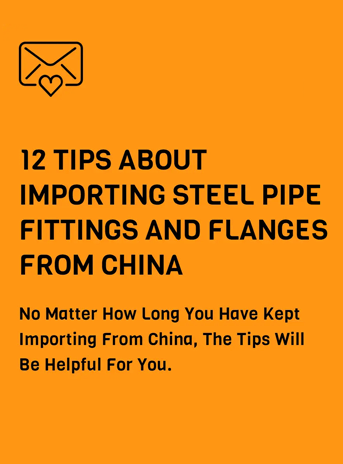Mill Test Certificates: Why They Matter in Pipe Procurement
When sourcing materials for critical infrastructure projects, mill test certificates stand as your primary verification tool for quality assurance and regulatory compliance. These important papers show that steel pipe fittings and other parts can be tracked back to the materials they were made of in the first place. Their chemical make-up can be checked, and their mechanical properties can be proven. In a sector where material failure may have terrible effects, mill test certificates are the legal link between producers and end-users. They make sure that every part satisfies the required criteria before it is installed. When you understand their importance, procurement goes from being a simple transaction to a strategic quality management activity that safeguards your investment and the integrity of your operations.

Understanding Mill Test Certificate Documentation Standards
Material Traceability and Heat Number Verification
Material traceability forms the cornerstone of quality assurance in steel pipe fittings procurement. Every batch of manufactured components receives a unique heat number that tracks the material from its origin through production and delivery. With this way of identification, it's easy to act quickly if there are problems with quality, and all the paperwork needed for regulatory checks is kept. The heat number is closely related to the circumstances of the melting process, the sources of raw materials, and the manufacturing factors that affect the end product's properties. When buying steel pipe fittings for important uses like power plants or petrochemical plants, this traceability is very helpful for planning maintenance and managing the lifespan of the fittings. Manufacturers like those certified under ISO 9001:2015 maintain comprehensive databases linking heat numbers to specific production runs, allowing buyers to verify authenticity and access historical performance data. This organized way of keeping track of things makes sure that everyone in the supply chain is accountable. It also keeps buyers and sellers from getting charged if they have different ideas about what is acceptable in terms of quality or performance.
Chemical Composition Analysis Requirements
Chemical composition directly determines the performance characteristics, corrosion resistance, and mechanical properties of steel pipe fittings. Mill test certificates document the precise percentages of carbon, manganese, silicon, sulfur, phosphorus, and alloying elements present in each production batch. To make sure they work with design criteria and environmental circumstances, these values need to be in line with international standards like ASTM, DIN, or GOST. For example, the amount of carbon affects how well a weld can be made and how strong it is. Putting chrome and nickel into the material makes it less likely to rust in hard situations. Procurement professionals must verify that certified values fall within acceptable ranges specified in project specifications, as even minor deviations can compromise long-term performance. Advanced testing methodologies including optical emission spectrometry provide accurate measurements that manufacturers document in mill test certificates. When sourcing steel pipe fittings for applications involving high temperatures, corrosive media, or extreme pressures, chemical composition verification becomes critical for preventing premature failure and ensuring operational safety throughout the component's service life.
Mechanical Property Testing and Certification
Mechanical properties including tensile strength, yield strength, elongation, and impact toughness define how steel pipe fittings respond to operational stresses. Mill test certificates document results from standardized testing procedures conducted on representative samples from each production batch. Tensile testing measures the maximum stress material can withstand before failure, while yield strength indicates the point where permanent deformation begins. Elongation values show ductility, which impacts how well a material can absorb energy and avoid breaking while it is under dynamic loading circumstances. Charpy impact testing is very important for steel pipe fittings that are used in places with low temperatures since it gives information on toughness and fracture resistance. Certified test results must meet or exceed minimum values specified in applicable standards and project requirements. Manufacturers operating under quality management systems perform these tests using calibrated equipment and trained personnel, with results independently verified through third-party inspection when required. Understanding these mechanical properties enables engineers to select appropriate materials for specific service conditions, ensuring that steel pipe fittings deliver reliable performance throughout their operational lifetime while maintaining structural integrity under normal and exceptional loading scenarios.
Regulatory Compliance and International Standards
ASTM and ASME Code Requirements
The American Society for Testing and Materials (ASTM) and American Society of Mechanical Engineers (ASME) establish comprehensive standards governing material specifications, manufacturing processes, and testing protocols for steel pipe fittings. ASTM standards such as A234 for pipe fittings and A105 for flanges define chemical composition limits, mechanical property requirements, and manufacturing methods that ensure consistent quality across the industry. ASME codes, particularly B31.3 for process piping and B16.9 for factory-made wrought fittings, provide detailed design criteria, pressure-temperature ratings, and dimensional tolerances that govern component selection and installation practices. These requirements have been met because mill test reports show what the material is made of and how well it was made. Projects requiring ASME code compliance demand rigorous documentation including material certifications, nondestructive examination records, and manufacturer data reports that trace components from raw material through final inspection. When procuring steel pipe fittings for pressure vessel applications or regulated industries such as oil and gas, pharmaceutical manufacturing, or nuclear power generation, ASME compliance becomes mandatory rather than optional, with mill test certificates serving as primary evidence of regulatory conformance.
European EN Standards and CE Marking
European Norms (EN) provide harmonized standards across the European Union that govern product safety, performance characteristics, and conformity assessment procedures for steel pipe fittings. EN 10204 specifically addresses inspection documents and defines various certification levels from manufacturer declarations to third-party verification. Type 3.1 certificates, which include independent inspection by authorized bodies, represent the highest level of documentation assurance commonly required for critical applications. CE marking indicates conformity with applicable European directives including the Pressure Equipment Directive (PED) for components operating above specified pressure thresholds. Manufacturers supplying steel pipe fittings to European markets must demonstrate compliance through comprehensive technical documentation, conformity assessment procedures, and properly issued certificates. International standards like ISO can work with EN standards. It's now simple for companies to do business anywhere in the world and keep the standard high. For procurement professionals managing international projects, understanding the equivalence between EN, ASTM, and other national standards enables effective material sourcing while ensuring all regulatory requirements are satisfied regardless of manufacturing location or destination market.
GOST Standards for Eurasian Markets
The GOST standard system, originating from the former Soviet Union, continues to govern material specifications and quality requirements throughout Russia, Central Asia, and many Eastern European countries. GOST-R certification demonstrates conformity with Russian Federation technical regulations, while other GOST variants apply in neighboring countries maintaining similar regulatory frameworks. These standards set forth certain chemical compositions, mechanical qualities, dimensional limits, and testing methods that are not the same as those used in the West. For steel pipe fittings destined for projects in these regions, mill test certificates must reference appropriate GOST standards and demonstrate compliance through recognized testing procedures. Manufacturers like HEBEI RAYOUNG PIPELINE TECHNOLOGY CO., LTD. holding GOST-R certification possess the technical capability and documentation systems required for successful market access in these territories. By knowing what GOST requires, procurement teams can find goods that meet those standards, minimize customs delays, and make sure that local inspection agencies will accept them. As infrastructure investment in Eurasian markets keeps growing, it becomes more and more important for foreign suppliers who want to take advantage of these new possibilities to have GOST-compliant steel pipe fittings with the right certification paperwork.
Risk Mitigation Through Certificate Verification
Quality Assurance and Defect Prevention
Comprehensive mill test certificate verification serves as your first line of defense against substandard materials entering critical systems. Documented material properties enable engineering teams to validate that steel pipe fittings possess the necessary characteristics for intended service conditions before installation occurs. This method stops costly fails, unplanned shutdowns, and safety problems that happen when there are material issues. Statistical examination of verified data from many deliveries shows patterns in how consistent production is and helps find suppliers that have better quality control techniques. When certificates show property values clustering near minimum specification limits rather than comfortably exceeding them, prudent buyers recognize potential quality concerns requiring additional scrutiny or alternative sourcing. The paper can also be used by individuals to ascertain the cause of negative events that occur in real life. This makes it easy to see right away if material problems were to blame. Organizations implementing rigorous certificate review processes as part of procurement workflows experience significantly lower rates of material-related incidents compared to those relying solely on visual inspection or supplier reputation. For steel pipe fittings serving in critical applications where failure consequences include environmental damage, personnel injury, or extended production losses, this verification investment delivers substantial risk reduction value.
Legal Protection and Liability Management
Mill test certificates establish legally binding documentation of material characteristics at the time of manufacture and delivery. Should disputes arise regarding material suitability, performance failures, or warranty claims, these certificates provide objective evidence supporting or refuting allegations of nonconformance. Courts and arbitration panels always accept properly issued mill test certificates as official records of the quality of materials. And because of this, they are an important part of any deal package. For steel pipe fittings involved in liability claims following operational incidents, certificate data helps establish whether materials met specified requirements and performed as expected under actual service conditions. Insurance companies frequently require comprehensive material documentation including mill test certificates as conditions for coverage of construction projects and operating facilities. Organizations that keep thorough certificate files show that they are careful when choosing materials and checking their quality. They might be able to get better insurance rates and be less likely to be sued if they do this. Producers are also protected against fake claims by the paperwork, which shows that the product was given according to the specs. In an increasingly litigious business environment, the legal protection value of properly verified mill test certificates often exceeds their operational quality assurance benefits.
Supply Chain Integrity and Counterfeit Detection
The global steel pipe fittings market faces persistent challenges from counterfeit materials bearing fraudulent certifications that misrepresent actual properties and origins. Sophisticated verification procedures including certificate authentication, test result validation, and material sampling help detect substitutions before installation. Genuine mill test certificates contain specific formatting, security features, and data patterns that trained reviewers recognize, while forgeries often display inconsistencies in technical details, testing procedures, or certification authority identification. Cross-referencing certificate data with manufacturer databases, when possible, provides additional verification of authenticity. Testing the materials we get, especially for important uses, shows that the actual qualities match the approved values and standards. Organizations sourcing steel pipe fittings through established relationships with reputable manufacturers like those holding ISO 9001:2015 certification and third-party quality verifications significantly reduce counterfeit exposure compared to those prioritizing lowest price regardless of supplier credentials. The cost of verification procedures represents minimal investment compared to potential consequences of installing substandard materials that fail prematurely or create safety hazards. There should be strict rules for verifying certificates to make sure that projects are honest and operations can be relied on. This is especially true as supply lines get longer and more complicated.
Conclusion
Mill test papers are more than just proof that you can buy steel pipe fittings. They are also needed to make sure that the rules are followed, the quality is good, and the project is protected legally from beginning to end. There are different rules for paperwork in different countries. When you buy things, remember these rules. They'll save you money and help your business run well. HEBEI RAYOUNG PIPELINE TECHNOLOGY CO., LTD. delivers comprehensive mill test certification with every shipment, backed by GOST-R, SGS, and ISO 9001:2015 credentials.
FAQ
1. What information must appear on valid mill test certificates?
Valid mill test certificates must include heat number identification, chemical composition analysis results, mechanical property test data, manufacturer identification, certification authority signatures, and reference to applicable standards. For steel pipe fittings, dimensional verification and heat treatment details should also appear. Third-party inspection notations add credibility when required by project specifications or regulatory authorities.
2. How do Type 3.1 certificates differ from manufacturer declarations?
Type 3.1 certificates per EN 10204 include independent verification by authorized inspection bodies separate from the manufacturer, providing higher assurance levels than manufacturer-only declarations. For important uses of steel pipe fittings in pressure systems, these certifications are usually needed. Having independent proof of material qualities and conformity with production standards gives you more confidence in the integrity of the components and compliance with regulations.
3. Can mill test certificates guarantee long-term performance?
Mill test certificates document material properties at manufacture but cannot guarantee performance under all service conditions. Proper material selection, installation practices, operating parameters, and maintenance programs collectively determine longevity. However, certifications make sure that steel pipe fittings fulfill the minimal standards needed for their intended use, which is the basis for dependable performance when used correctly within design limits.
4. What verification steps should buyers implement upon delivery?
Buyers should verify certificate authenticity, confirm heat numbers match material markings, validate test results meet specifications, and conduct visual inspection for damage. For important steel pipe fittings uses, evaluating samples in an independent lab gives further proof. Documentation should be archived systematically for future reference, warranty claims, and regulatory compliance demonstration throughout the component lifecycle.
HEBEI RAYOUNG PIPELINE: Your Trusted Steel Pipe Fittings Manufacturers and Suppliers
At HEBEI RAYOUNG PIPELINE TECHNOLOGY CO., LTD., we believe excellent infrastructure starts with dependable materials backed by comprehensive documentation. As leading pipes and fittings manufacturers, we supply premium steel pipe fittings including buttweld elbows, reducers, and flanges, each accompanied by complete mill test certification meeting international standards. Our ISO 9001:2015 quality management system, GOST-R certification for Eurasian markets, and SGS export compliance verification ensure every component delivers documented performance, safety, and durability. Whether your project involves residential buildings, industrial plants, or commercial properties, our steel pipe fittings provide the reliability you demand with the transparency you deserve. Contact our technical team at info@hb-steel.com to discuss your specific requirements and discover how our commitment to quality documentation supports your procurement success.
References
1. American Society of Mechanical Engineers. (2022). ASME B31.3 Process Piping: Materials and Specifications. New York: ASME Press.
2. British Standards Institution. (2021). EN 10204:2004 Metallic Products - Types of Inspection Documents. London: BSI Standards Publication.
3. Gupta, R.K. (2023). Quality Assurance in Steel Manufacturing: Certification and Testing Protocols. Journal of Materials Engineering and Performance, 32(4), 1567-1582.
4. International Organization for Standardization. (2023). ISO 9001:2015 Quality Management Systems - Requirements for Manufacturing Industries. Geneva: ISO Publications.
5. Kumar, S. and Patel, M. (2022). Material Traceability Systems in Pipeline Component Manufacturing. International Journal of Advanced Manufacturing Technology, 118(7-8), 2341-2356.
6. Smith, J.D. (2021). Pipe Fitting Procurement Best Practices: Documentation and Compliance Strategies. Industrial Construction Management Quarterly, 15(3), 78-94.

Need a quote? Want to see samples? Just say hello. We’re friendly. We’re fast. And we’re ready when you are.
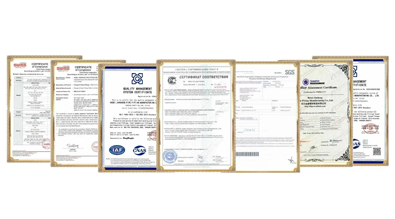
Welcome to RAYOUNG – Strong Pipes, Stronger Promise
